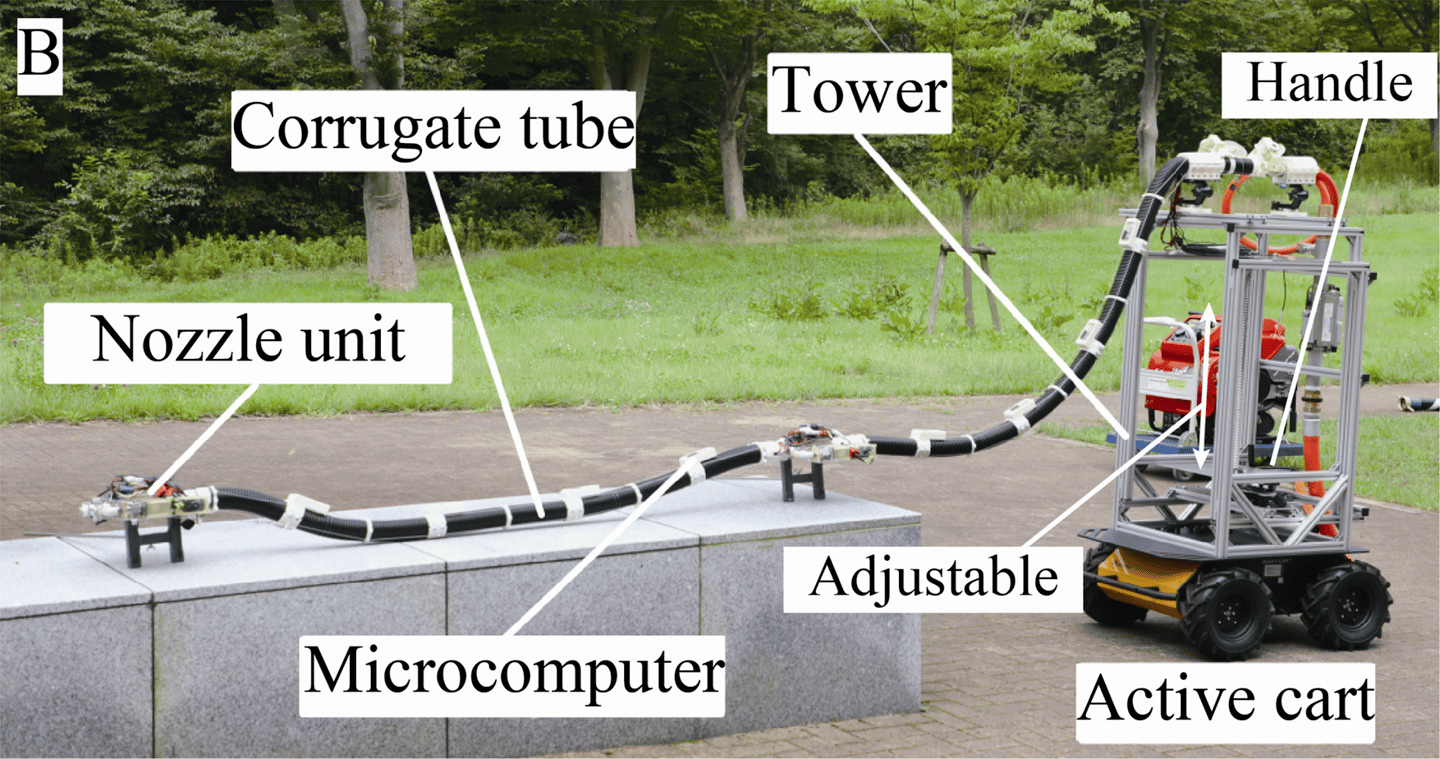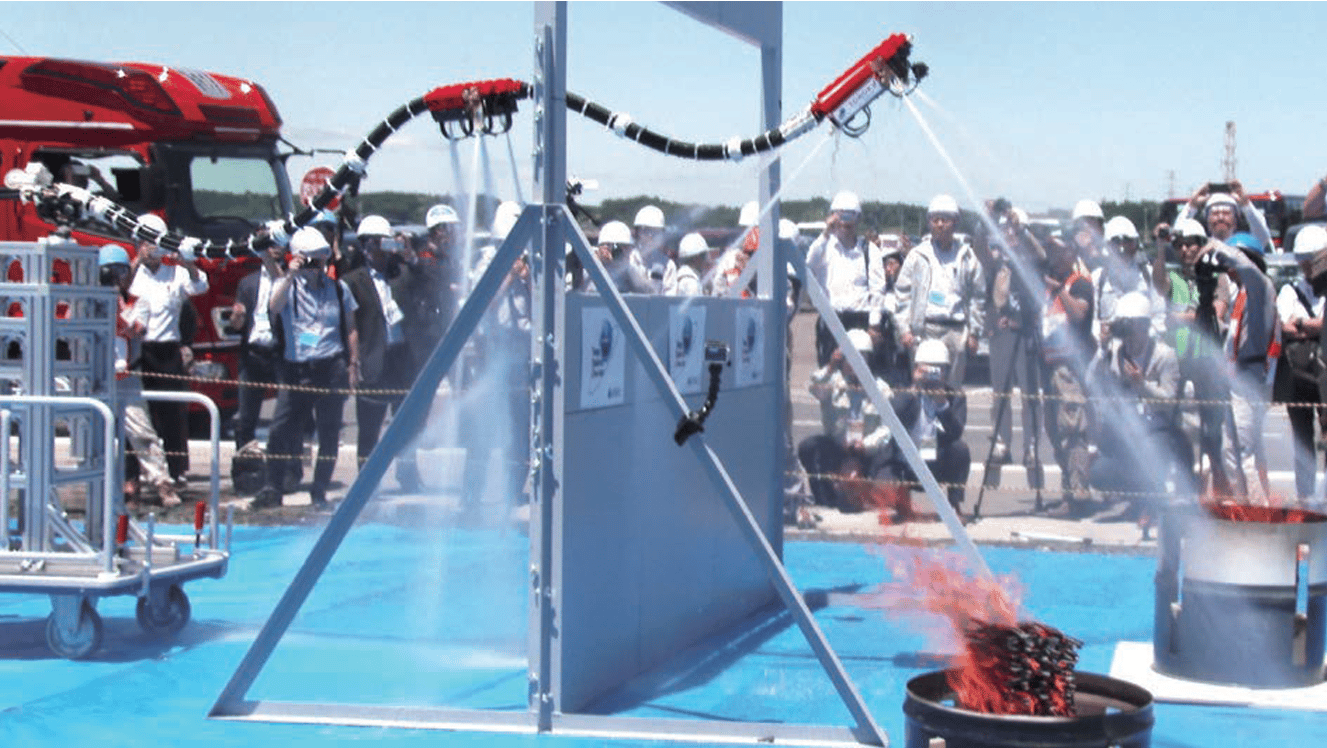Japanese researchers have created and open-sourced a flying firefighting hose that levitates and steers itself to fight fires using its own water pressure as a two-part propulsion system, spraying water down onto fires and keeping operators safe.
The “flying dragon” system has two four-nozzle propulsion units built in – one at the end of the hose, one maybe 3 m (10 ft) back. Each of these can be thought of as something like a watery quadcopter – valves and swivels on each nozzle control flow and direction of thrust, allowing it to rise, balance and steer itself in the air the way a regular drone might … Well, two drones really, connected with a heavy rope and dragging a heavy tail.
A maximum flow rate of 6.6 liters (1.5 gal) per second gives pressure ratings up to 1 megapascal (145 psi). That’s enough to lift the hose some 2 m (6.6 ft) above the last thing it’s been draped on. The hose on the prototype at this point is just 4 m (13.2 ft) long, and runs back to a little control station trolley, where an operator stands and drives the thing.

Akita Prefectual University
The operator uses an underslung camera on the “head” of the dragon, equipped both with regular and thermal vision, to see where the thing is pointed and make sure it’s blasting water down at the bits that need it most. No need to hit a trigger once you’ve got the fire in your sights; it’s blasting water already anyway, just to stay in the air. Mind you, the vision off the camera isn’t the best; there’s all this water in the way, you see, and the onboard footage would be disappointing even if you’d shot it with a late-90s Nokia. I’m not kidding, look:
frontiers robotics ai dragon firefighter view
Still, it’s a lovely idea, taming and harnessing the chaotic hilarity that ensues when a kid lets go of a hose that’s running on full blast, and tries to catch it as it snakes about the place drenching all in its wake. In fact, you know what? Because it’s Christmas, and that last video was so terrible, here, enjoy a group of rookie Chinese firemen comprehensively failing to control the “crazy hose” effect in a training exercise:
Firemen left soaked after colleague loses control of water hose
The “flying dragon” might make a bit of watery mess as it does its job, and not all the water it squirts will go exactly where it’s needed, but on the other hand it’s a clever and fun way to aerially douse a fire that doesn’t put firefighters in the middle of it.
Four meters, though, is clearly not enough hose for most jobs. And 2 m isn’t high enough, either. That’s one issue the dragon will face moving forward, because increasing either of those parameters will require the bot to lift and drag a substantially heavier hose behind it. So it’ll need more pressure, and that may not be a simple thing to increase without making substantial changes to the fire trucks it’ll be attached to. Also, the team has been finding the prototype’s plastic bits keep melting when they fly it over the top of fires. That seems like something they should have thought of.
They’ve open-sourced the design, publishing it for anyone to build and develop in a paper in the journal Frontiers in Robotics and AI.

Akita Prefectual University
Perhaps with multiple groups working on it, it might be possible to extend the Osaka team’s … rather disappointing timeline on this project. “We estimate that it will take approximately 10 more years to deploy our robot in real-world firefighting scenarios,” said joint corresponding author, assistant professor Dr Yuichi Ambe, in a press release.
Source: Akita Prefectual University
Source of Article

